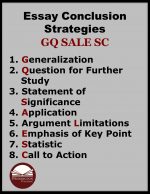Ten Tips for Coaching Basketball and Writing
Being born and raised in Los Angeles, I knew little about life in the country. Newly married, I agreed to follow my wife’s dream and apply for teaching jobs in the Gold Country of Northern California. I sent out my resume, highlighted by my three-whole-months of substitute teaching experience and hoped for the best.
Four days before the start of school, I got a call from Sutter Creek Elementary, a K-8 school, in picturesque Sutter Creek. The principal asked two questions: “Could you be here and ready to teach by Monday?” and “Are you willing to coach our eighth grade basketball team?” I gulped and said, “Yes.” Little did I know what I was in for…
The teaching part of the job was challenging. I taught six periods of history and English to the seventh and eighth graders. My principal asked me to focus on their weakest area: writing. I jumped in with the Five-Paragraph Essay. I lectured them about all of the component parts and had them write one final draft essay most every day. That’s all I knew about writing instruction, but I struggled in silence–too embarrassed to ask for help. However, compared to the other part of my job as basketball coach, teaching writing seemed “a walk in the park.” The basketball part of the job was a nightmare.
My Sutter Creek students pummeled me with questions on the first day: “Why did you leave Los Angeles? What’s it like having McDonalds®, Burger King®, and KFC® all on the same block?” “Do you know any of the Los Angeles Lakers?” There wasn’t much for kids to do in Sutter Creek, other than basketball.
Basketball was pretty much an entire-school-year affair. We began practicing a few weeks after the beginning of school. More than half of the eighth graders tried out, and I had to “cut” the team down to the number of our uniforms. This was a difficult proposition because the kids were really quite good, having played in community leagues for years. In fact, I had a bonafide superstar: David Dalton. David could dribble between his legs and do both right and left-handed lay-ups. And he could shoot the “lights-out.”
I knew little about basketball. Baseball had been my game. So, I turned to the experts. I called up my six-foot-five-inch best friend and asked his advice; I read books; I watched video tapes; I studied diagrams; I learned how to teach the game.
We had three months to practice before our season was to begin. I taught a motion offense and set-plays, full-court and half-court traps, and complicated zone defenses. I fancied myself the “sage on the stage.” Our practices consisted of eighty-five minutes of walking through my complex plays and five minutes of scrimmage at the end of practice. My principal left me to my own devices and supported me when a few of the parents began grumbling about my rigorous practices.
Our season began and we won every game. I don’t think we scored more than a few points off of my elaborate motion offense or set-plays. We did, however, score plenty of points when the plays broke down and on opposing team’s turnovers. David Dalton was incredible. He consistently doubled the score of the opposing team all by himself. We even handily beat our archrival, Jackson Elementary, in our one seasonal match-up. Victory was sweet, but after that game, the opposing coach took me aside and asked me if he could give me one small piece of advice. “Of course, I said.” He advised, “Perhaps you should teach less and coach more.” I thanked him, but really didn’t understand the difference.
In the final game of our championship tournament, we once again faced our archrival, Jackson Elementary. The high school gym was packed with 800 spectators. We again were winning handily after the second period of play. As the third period began, Jackson’s defense had changed. Two of their guys were stationed “under the bucket,” but three guys were glued to David Dalton. Frustrated, David began picking up fouls. I did not know how to adjust. None of my six-foot-five-inch friend’s advice, the books I had devoured, or the video tapes I had watched had said anything about adjusting to a triple-team.
At the beginning of the fourth period, David fouled-out. I kept calling out plays, but we couldn’t score. I called time-outs and reminded the players about everything I had taught them. Nothing worked. Jackson crept closer. With time running out and the score tied, a Jackson player hit a “buzzer-beater” and Jackson Elementary earned the championship. The parents and my players were disgusted with me. Jackson’s coach had out-coached me.
After assuring me that I would not be fired, my principal “suggested” that he would coach next year and I could serve as his assistant. Quite humbling. However, the next year, with my principal’s help I learned how to coach, not teach basketball. And learning how to coach basketball made me a much better writing teacher.
Here are ten tips that my principal shared with me about coaching basketball that helped me change from a teacher of writing to coach of writing:
1. My principal had me practice with the boy’s eighth grade basketball team. It was embarrassing not being the best player. I learned the value of doing each of the writing assignments that I assigned to my students. By doing each writing task, I began to see things from the students’ perspectives. I caught my instructional mistakes, realized how much I assumed students already knew, and re-worked my instruction accordingly. I began doing Write-Alouds with my classes to model my own writing problem-solving.
2. My principal had me shoot free-throws with the team. The boys all shot better percentages than I did, but I did improve. I learned to share my own writing with students. Some of it was quite good; much of it was poor. But, the writing assignments were authentic and provided reachable models for the students. Solely reading great works of literature does not help students improve their writing skills. The reading-writing connection is not the magical “be-all,” “end-all” solution to literacy.
3. My principal emphasized drills: passing, dribbling, rebound, and defensive positioning. I learned to teach writing inductively—from the part to the whole. I spent time coaching students on sentence structure, modeled sentence combining, had students work on grammatical sentence variety, and paragraph development. I took classes from mentors through the Area 3 Writing Project and began to help students practice the components of the Writing Process. I put the five-paragraph essay on hold for a while.
4. My principal scrimmaged a lot. Of course the boys loved this, but I noticed something else. They were incorporating what they practiced in their drills, with a few reminders. I learned to allot more time to actual writing in a wide variety of voices, to different audiences, for different purposes, and in different forms to build writing style and fluency. Students got better at manipulating the elements of rhetorical stance and their writing coherency significantly improved.
5. My principal kept things simple. He taught very few basketball plays. He did demonstrate and practice “the pick and roll” and “the pick and pop,” but not much else. Mostly, he told the boys to “free lance.” I learned to relax and stick with the “main and plain” components of writing instruction. I dropped my demands that “the devil is in the details” and stopped obsessively red-marking every mechanics and spelling error.
6. My principal didn’t force every player into the same box. He didn’t have any David Daltons that next year, but he let players go with their strengths and interests. He even let our only six-footer play the guard position, and not the center position. I learned to differentiate my writing instruction. Some students wrote three-page narratives, while some wrote one-page narratives. I still slept at night and the sun still rose and set. I discovered grammar diagnostic assessments and stopped teaching parts of speech to my students who had already mastered their parts of speech.
7. My principal never taught from the sidelines during our basketball games. He knew that coaching was for practices and not for games. I learned to use judicious error analysis and criticism in writers conferences with students during the prewriting, drafting, revision, and editing stages of the writing process. But, I focused only on what students did right on their final “game time” published products.
8. My principal was a motivator. Instead of focusing on the myriad of things our players did wrong, he focused on the few things they were doing right. He built up their self-confidence. He let the kids play. I learned that students could write better, if they perceived themselves as effective writers. I praised student work, published student work in the local paper, made parent phone calls.
9. My principal knew about successive approximation. He pushed his players to do “do-able” process tasks on the court, not product tasks, and then asked them to “do a bit more.” He had his son keep track of “do-able” tasks, like running down the court during transition defense and “boxing out” during our games, not product tasks like points scored, rebounds, turnovers, or assists. I learned to use detailed analytical rubrics to help students self-evaluate their writing and specifically inform them how to improve upon their strengths.
10. My principal planned his practices well, but he was flexible. If a drill did not go well, he knew when to devote more time to the drill, at the expense of another. He also knew when to “ditch” the drill and do something else. I learned to adjust my writing instruction to what students were and were not learning. Some carefully planned week-long lessons were accomplished in two days. Many mini-lessons turned into multiple-day lessons as I re-taught and struggled to find ways to get my students to learn what seemed so easy for me to teach. I learned the value of quick, informal formative writing assessments. I learned the value of asking students “thumbs up” if you understand, and “thumbs down” if you don’t.
*****

TEACHING ESSAYS BUNDLE
The author’s TEACHING ESSAYS BUNDLE includes the three printable and digital resources students need to master the CCSS W.1 argumentative and W.2 informational/explanatory essays. Each no-prep resource allows students to work at their own paces via mastery learning. How to Teach Essays includes 42 skill-based essay strategy worksheets (fillable PDFs and 62 Google slides), beginning with simple 3-word paragraphs and proceeding step-by-step to complex multi-paragraph essays. One skill builds upon another. The Essay Skills Worksheets include 97 worksheets (printables and 97 Google slides) to help teachers differentiate writing instruction with both remedial and advanced writing skills. The Eight Writing Process Essays (printables and 170 Google slides) each feature an on-demand diagnostic essay assessment, writing prompt with connected reading, brainstorming, graphic organizer, response, revision, and editing activities. Plus, each essay includes a detailed analytical (not holistic) rubric for assessment-based learning.












